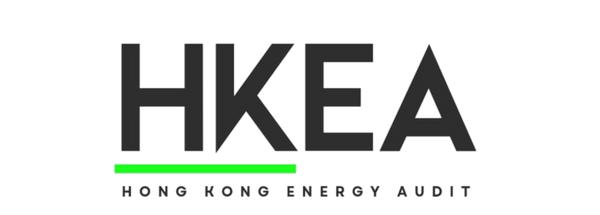
Writing an Engineering Practice Report: The First Step to Becoming a Chartered Engineer
Share
Applying for the Chartered Engineer (CE) qualification through CIBSE in Hong Kong requires submitting an "Engineering Practice Report." The report's review is the primary requirement for obtaining the qualification, and only then will one receive an interview with the CE. Many engineers, despite years of experience, miss out on the opportunity to become CEng candidates because they don't know how to begin writing a report, what format to use, or even how many words to include. There are two main styles for presenting an "Engineering Practice Report": competency-based and project-based. These two differ significantly in structure, focus, and writing strategy. Choosing the right format and mastering the key points are crucial to passing the assessment.
If you're considering taking the CEng exam but haven't written an Engineering Practice Report before, this article will help you understand the two report writing styles, the selection process, and the key points to consider, so you can avoid unnecessary mistakes.
Competency-Based Report
Competency-based reports are segmented according to the required competency framework for engineers established by certification bodies or engineering societies. Their primary purpose is to "benchmark"—that is, to systematically demonstrate that the applicant possesses all the technical, management, ethical, communication, and continuing professional development skills required for professional registration. Competency-based reports often focus on several core competencies (such as design analysis, problem-solving, team leadership, risk management, sustainability, professional responsibility, communication, and continuing professional development), and each competency point must be supported by examples.
Project-Based Report
A project-based report uses one or more representative projects as the main thread, linking together how the applicant faced challenging practical tasks in his or her career, how he or she applied engineering knowledge, made technical judgments, led the team, handled risks, and managed resources in the process. Each project usually includes an introduction, the applicant's role and specific actions, difficulties faced and solutions, and professional skills learned, etc., focusing on the explanation of "real-world experience", just like telling one's own engineering career story.
Based on international standards and the latest educational research, the competency-based model emphasizes that applicants fully meet the required competencies, while the project-based model focuses on how to integrate different abilities in real life. While both approaches essentially lead to the same goal, it's recommended that you choose one based on your personal experience and application requirements.
Competency-based report writing focus and structure
Clearly divided into sections:
Each competency is an independent section, with the official assessment criteria as the title, which is directly aligned with the competency table published by the certification body.
Each ability must be well-founded:
Your report shouldn't just talk about theory; you must cite specific experiences or examples to support your abilities. For example, when discussing your design skills, you should explain the project you worked on, how you analyzed the conditions, selected the technical solution, and then describe your results and reflections.
Show depth and breadth:
Don't just talk about one or two experiences, but rather raise challenges, analyze the process, personal thinking and leadership, and the reasons behind engineering decisions. It requires a balanced description of technical knowledge, management capabilities and ethical reflection.
Writing in active voice:
Clearly state "my" role, decision-making, contribution and results (i.e. "I did/I led/I solved...") to highlight personal ability and responsibility.
Professional development covered:
Continue to participate in professional training, seminars, technical presentations, etc. to express the importance of learning, professional communication, and lifelong learning.
Project-based report writing focus and structure
Selected representative projects:
Generally, it consists of 1-3 projects (depending on the length and complexity), and each project must reflect multiple professional capabilities.
Clarify your own responsibilities and level of participation:
Emphasize on the role you play in the project: project coordination? Design? Supervision? Or solving key problems?
Describe in detail the technical/management challenges:
Each project must clearly list the practical problems encountered in the work, such as technology, economy, environmental protection, and teamwork, and demonstrate the problem-solving process.
Integration capability demonstration:
Emphasize that a single project typically encompasses multiple engineering capabilities, such as design, analysis, coordination, cost control, risk management, and ethical judgment. A multi-faceted approach is crucial, examining not just "what was done," but "why it was done" and "what impact the results had."
Reflection and Professional Growth:
Describe how your professional abilities have improved after participating in the project, what you learned, how you will apply it in the future, and even how it will drive progress for the company or industry.
Data and graphic support:
You can add design drawings, flow charts, project photos, achievement indicators and other quantitative information to make the content more convincing.
How to choose between the two writing modes?
- If your career involves a variety of projects, but the coverage of each project is uneven, it is recommended to choose Competency-based and compare your skills with CEng one by one.
- If you have a flagship project of great significance, covering a wide range of topics in depth, a project-based approach will make it easier to focus on the narrative and highlight one main theme.
- Mixed approach: With competence as the main axis, each point is described in detail with a representative project, or with projects as the main axis, while each paragraph indicates the coverage of relevant competence points.
Engineering Practice Report Writing Process and Techniques
Pre-planning and data collection:
Review the official competency requirements and engineer responsibilities of the organization or engineering society you are applying to, and organize the projects you have participated in and their key achievements.
Review the real examples corresponding to each ability point:
The commonly used "STAR" writing method (Situation-Task-Action-Result): describe the situation (S), task (T), actual action (A), result (R), and summarize the learning points.
Emphasis on non-technical skills description:
British engineering majors generally emphasize soft skills such as communication, ethics, sustainable development, and collaborative leadership, and cannot only describe purely technical details.
Self-examination and peer review:
After writing, ask a senior colleague or mentor to review it to ensure that the content has no blind spots in ability and logical errors.
Chinese-English bilingual content and local elements:
If the report is mainly in English, it is necessary to ensure that the grammar and professional terminology are correct, but it is also necessary to incorporate the actual situation of the industry in Hong Kong and highlight the local working environment and specifications.
Key points to be expressed in the Engineering Practice Report
The key point of the Engineering Practice Report is to demonstrate that you possess all the engineering professional competencies listed by the certification body and can continue to independently meet new challenges in the future. The report should contain "capabilities, evidence, reflections, and improvements." Whether you use a Competency-Based Report or a Project-Based Report, the auditor should clearly see:
- How do you face and solve real-world engineering challenges?
- How to make good use of one's professional judgment and leadership skills;
- How to integrate theory, practice and innovation;
- How to communicate and coordinate effectively in teamwork/cross-disciplinary collaboration;
- How to comply with professional ethics and pay attention to social and environmental responsibilities;
- How to continue learning to promote personal breakthroughs and contributions to the industry.
HKEA instructors will teach you how to get started and complete your report
Whether competency-based or project-based, engineers' professional reports will stand out by demonstrating deep expertise, a reflective spirit, a clear structure, and genuine experience, while also providing compelling justification for the certification requirements. We recommend reading peer-reviewed examples and creating concise, focused, and focused reports. The ultimate goal of the report isn't just to describe your work experience, but to use concrete examples to convince the reviewer that you are ready to become a Chartered Engineer, capable of independent critical thinking and a self-reliant contribution to society. HKEA's highly qualified instructors, including former CIBSE Chartered Engineer examiners, will guide you through the completion and review of your Engineering Practice Report in three stages, significantly increasing your chances of passing. While you might have previously been daunted by the uncertainty of where to begin, our instructors will provide clear guidance through each stage. Start today! Please contact us for service terms and fees.
HKEA Chartered Engineer CEng One-on-One Course
- Course Phase 1 to Phase 3 - Submitting professional reports
- Course Stage 4 - Interview for Chartered Engineers
The first stage only costs HKD$1,500
Target customers: Those who wish to obtain the Chartered Engineer qualification through engineering institutions (such as CIBSE, IMechE, IET, HKIE, etc.)
Instructor Qualifications: Dr. Tse MY - BEng(Hons), PhD, CEng, FCIBSE, REA, WELL Faculty, LEED AP, SITES AP, BEAM Pro






